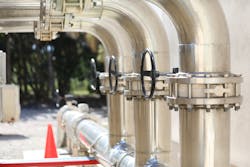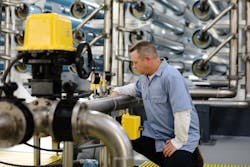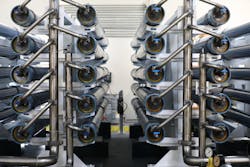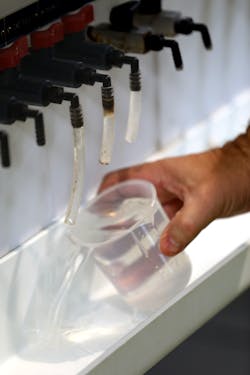Addressing Water Availability and Quality Challenges on Sanibel-Captiva Islands
Community meets freshwater demands and optimizes process efficiency with reverse osmosis
With groundwater salinity, local populations, and environmental standards continually rising in southern Florida, municipal water utilities are under heightened pressure to maintain the flow of sufficient, sustainable fresh water supplies to their communities. This is especially true for the Sanibel-Captiva Islands, which have only one source of potable water — the 5.99 million gallons treated and distributed daily by the Island Water Association’s Reverse Osmosis (RO) Treatment Plant.
Drawing from a series of 15 wells drilled into the Hawthorne and Suwannee aquifers, Island Water, a non-profit, member-owned potable water facility, relies on FilmTec™ RO technology to transform the brackish, high-salinity water into a pristine, drought-resistant supply of drinking water for its 6,700 residents. Population on the island fluctuates and averages about 14,600 due to the seasonal influx of tourists who enjoy attractions such as the 15 miles of unspoiled beaches, 230 species of birds, 25 miles of bicycle paths, abundant fishing, and zero traffic lights.
Potable water demand peaks during the tourist season in March and April when swimming pools must be filled, and lawns, gardens, and three golf courses must be watered.
VIDEO: Meeting Freshwater Demand In Florida
“Demand for water is typically highest during the early hours of morning,” said Brandon Henke, assistant chief operator for Island Water. “Standard demand during the day and into early evening is about 1,500 gallons a minute. By 4:00 or 5:00 a.m., it can get as high as 10,000 gallons a minute.”
Serving as a model for sustainable RO desalination, Island Water has won over 30 awards for its innovative water treatment system and is a two-time recipient of the prestigious Florida Department of Environmental Protection’s Operations Excellence Award for communities its size.
“Over the 30-plus years working with [Water Solutions], we’ve been able to test new technologies for them, and in turn [they] helped us tailor the membranes to our needs exactly,” Henke said. “It’s helped us a lot; it’s been a great system and a great working relationship.” WW
About the Author
Steven Coker
Steven Coker is a municipal technical leader with DuPont Water Solutions.
Laura Gallindo
Laura Gallindo manages marketing and communications for North and South America with DuPont Water Solutions.



